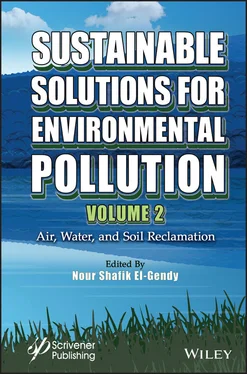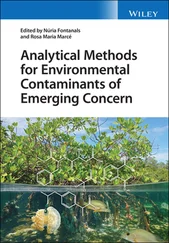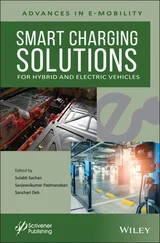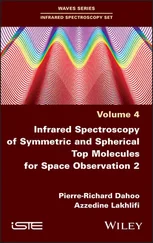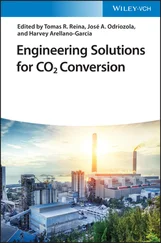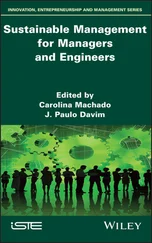Sustainable Solutions for Environmental Pollution, Volume 2
Здесь есть возможность читать онлайн «Sustainable Solutions for Environmental Pollution, Volume 2» — ознакомительный отрывок электронной книги совершенно бесплатно, а после прочтения отрывка купить полную версию. В некоторых случаях можно слушать аудио, скачать через торрент в формате fb2 и присутствует краткое содержание. Жанр: unrecognised, на английском языке. Описание произведения, (предисловие) а так же отзывы посетителей доступны на портале библиотеки ЛибКат.
- Название:Sustainable Solutions for Environmental Pollution, Volume 2
- Автор:
- Жанр:
- Год:неизвестен
- ISBN:нет данных
- Рейтинг книги:3 / 5. Голосов: 1
-
Избранное:Добавить в избранное
- Отзывы:
-
Ваша оценка:
- 60
- 1
- 2
- 3
- 4
- 5
Sustainable Solutions for Environmental Pollution, Volume 2: краткое содержание, описание и аннотация
Предлагаем к чтению аннотацию, описание, краткое содержание или предисловие (зависит от того, что написал сам автор книги «Sustainable Solutions for Environmental Pollution, Volume 2»). Если вы не нашли необходимую информацию о книге — напишите в комментариях, мы постараемся отыскать её.
This second volume in a broad, comprehensive two-volume set, “Sustainable Solutions for Environmental Pollution”, concentrates on air, water, and soil reclamation, some of the biggest challenges facing environmental engineers and scientists today.
AUDIENCE: Sustainable Solutions for Environmental Pollution,
Sustainable Solutions for Environmental Pollution, Volume 2 — читать онлайн ознакомительный отрывок
Ниже представлен текст книги, разбитый по страницам. Система сохранения места последней прочитанной страницы, позволяет с удобством читать онлайн бесплатно книгу «Sustainable Solutions for Environmental Pollution, Volume 2», без необходимости каждый раз заново искать на чём Вы остановились. Поставьте закладку, и сможете в любой момент перейти на страницу, на которой закончили чтение.
Интервал:
Закладка:
Lemna minor has the ability to remove soluble Pb and Ni (Axtell et al. , 2003) and Cr(VI) (Uysal, 2013; Sinha et al. , 2018). Wolffia globosa is also reported for its accumulation capability for Cd and Cr (Boonyapookana et al. , 2002). Metal removal efficiency by common duckweed ( L. minor) from landfill leachate is larger than 70% for Ni, Pb, Cu, and Zn, with a maximum value for Cu of 91%. Bioconcentration factors are lower than 1 with a maximum for Cu (0.84) and Pb (0.81), indicating a low metal bioaccumulative capacity of L. minor (Daud et al. , 2018). Intermediate duckweed ( Spirodela intermedia ) was identified as a good Hg accumulator. Bioaccumulation of Hg takes place mainly in the roots (bio-concentration factors larger than 1,000), leaves accumulating less (bio-concentration factor larger than 200), for a concentration of 1 mg/L of Hg in 96 hrs. In all cases, translocation factors lower than 1 indicates an absence of Hg translocation (de la Fourniere et al. , 2019). Floating ferns, such as Carolina mosquitofern Azolla caroliniana , showed that the plants have the potential to purify water polluted by Hg and Cr (Bennicelli et al. , 2004). Water spangles, Salvinia minima , can be used as a phytoremediating agent for the heavy metal removal in effluents. S. minima grows in low concentrations of Cd, Ni, Pb, and Zn and adsorbs or accumulates these metals in its tissues in higher concentrations, without necessarily growing (Iha and Bianchini, 2015). Floating fern S. natans shows some capacities to accumulate metals, as shown by the concentration factors calculated in relation to the surrounding water sampled in the slightly contaminated Yi River (Shandong): Cr: 4.3; Ni: 2.3; Cu: 12.4; Zn: 29.0; and Pb: 73.2 (Li et al. , 2019). High bioaccumulation factors (Cu: 9,526; Ni: 13,810; and Zn: 42,438) measured on S. natans collected in recreational ponds in a residential area near Wrocław (Poland) confirm the high accumulative capacity of Salvinia spp. (Polechonska et al. , 2019).
In submerged aquatic plants, the adsorption of metals mainly takes place through the fully submerged leaves, the main function of roots being to anchor the plant in the bottom sediment. This constant submersion allows the plant to present a greater surface area of biomass in contact with the water to accumulate heavy metals. Hornwort ( Ceratophyllum demersum ) is an almost rootless plant; some leaves develop into root-like organs (rhizoids) capable of attaching the stems to the sediment. Measurements of the heavy metal accumulation capacity of C. demersum in a wetland in Himalayan Kashmir show high bio-concentration factors for Cd (>1,300) and Co (>3,600) and, to a lesser extent, for Cr (689), Pb (294), Ni (196), and Cu (85). The results confirm the high capacity of C. demersum to bio-accumulate Co and Cd (Ahmad et al., 2016). C. demersum shows in natural waterbodies high bioaccumulation factors for heavy metals: Cd (>24,700); Cr (>33,900); Cu (>3,200); Ni (>29,600); Pb (1677); and Zn (>14,100), indicating a considerable capacity to absorb trace metals. Its properties make C. demersum a particularly relevant indicator in the monitoring of heavy metal pollution (Dogan et al. , 2018; Polechonska et al., 2018). Measurements of the heavy metal accumulation capacity of Potamogeton natans in a wetland in Himalayan Kashmir show high bio-concentration factors for Cd (1028) and, to a lesser extent, for Co (744), Pb (712), and Ni (363). The results confirm the high capacity of P. natans to bio-accumulate Cd (Ahmad et al. , 2016). Pondweed ( Potamogeton crispus ), a rooted submerged angiosperm, sampled in the Yi River (Shandong) can accumulate relatively large amounts of heavy metals as shown by these concentration factors calculated in relation to sediments: Cr: 9.2; Ni: 11.8; Cu: 9.4; Zn: 18.8; and Pb: 2.7. Factors are closely related to sedimentary metal concentrations (Li et al. , 2019).
Aquatic plants can also be used to extract radionuclides from water bodies (Vanhoudt et al. , 2018). Watermilfoil ( Myriophyllum spicatum ) is a promising candidate for the removal of 59Co and 133Cs from contaminated water bodies, even in the presence of their 137Ce and 60Co radioisotopes. M. spicatum removes more than 90% and 60% of stable 59Co and 133Cs radioisotopes within 24 hours, even in the presence of 60Co and 137Cs. The bio-accumulation factors for the whole plant are 27.13 for 137Ce and 10.80 for 60Co (Saleh et al. , 2020).
1.9.3 Organic Micropollutant Removal
Urban and domestic wastewater is the main source of organic compounds such as halogenated aromatic compounds, BTEX compounds (benzene, ethyl-benzene, toluene, and three isomers of xylene), pharmaceuticals (e.g., antibiotics, hormones, cardiovascular drugs, antidepressants, anti-epileptics, and anti-cancer drugs) or personal care products (Gasperi et al. , 2014; Becouze-Lareure et al. , 2019). The presence of antibiotics can affect many aquatic species and generate the appearance or maintenance of antibiotic-resistant species. By phytodegradation macrophytes are able to metabolize contaminants (Black, 1995; Ansari et al. , 2020). Microorganisms around plant roots play a significant role in organic pollutant biodegradation during rhizoremediation process (Zhang et al. , 2014a). The presence of such active molecules can affect the plant rhizosphere and thus compromise the phytoremediation potential in CWs. Urban storm water runoff contains unburned hydrocarbon residues and combustion products such as PAHs (Gasperi et al. , 2014). Bioremediation can be used as an alternative to physical and chemical methods taking advantage of the presence of natural ability of certain microbes to degrade hydrocarbons (El-Mufleh et al. , 2014). Bioremediation can be achieved by biostimulation or bioaugmentation by adding microorganisms in the polluted environment (Amer et al. , 2015). Degradation of the aromatic cycles requires their opening by oxidation. Degradation of PAHs involves enzymes such as dioxygenase, peroxidizes, and cytochrome P450 monooxygenases (Gaur et al. , 2018). Nonspecific oxidoreductases emit free radicals oxidizing aromatic cycles by oxygen transferring, and cleave aromatic cycles, allowing then enzymatic degradation by bacteria (Cota-Ruiz et al. , 2019).
Microbial degradation of PCBs follows two possible degradation pathways: anaerobic dechlorination and aerobic degradation (Jing et al. , 2018). As with PAHs, the aerobic degradation of PCBs begins with a double oxygenation on the least chlorinated part of the biphenyl nucleus. This oxidation sequence leads to the opening of the phenolic ring and to the formation of cellular metabolism compounds: acetaldehyde and pyruvic acid. Chlorine will be released in the form of chloride (Cota-Ruiz et al. , 2019). However, only molecules with three or less chlorine atoms can be degraded in this way (Sangely, 2010; Jing et al. , 2018). Because of only a thin sedimentary aerobic surface layer, many aquatic environments are not able to perform any aerobic biodegradation. In anaerobic dechlorination process, a hydrogen atom replaces a chlorine atom. The PCB serves as a TEA in three possible positions of the chlorine atom, in order of preference: in the para , meta , and ortho positions. Biostimulation by pretreating the sediment with halogenated aromatic compounds (a kind of halopriming) induces the oxidoreductase enzymes in native dechlorinating microbial consortium (Jing et al. , 2018). Biostimulation can also be achieved by installing an electron-accepting anode in the sediment (cf. § 1.10.3). Emergent plant species used for PCB phytoremediation include alfalfa Medicago sativa , Chinese bushclover Lespedeza cuneate , everlasting pea Lathyrus sylvestris , reed canary grass Phalaris arundinacea , cucurbits Cucurbitaceae sp., bur-reed Sparganium sp., Alaska willow Salix alaxensis , and white spruce Picea glauca (Jing et al. , 2018). Stonewort Chara vulgaris , duckweed Lemna minor , water-milfoil Myriophyllum spicatum , and pond-weed Potamogeton perfoliatus showed their potential to remove detergents such as alkylbenzenesulfonate (Zhou et al. , 2018; Liu et al. , 2019; Ansari et al. , 2020).
Читать дальшеИнтервал:
Закладка:
Похожие книги на «Sustainable Solutions for Environmental Pollution, Volume 2»
Представляем Вашему вниманию похожие книги на «Sustainable Solutions for Environmental Pollution, Volume 2» списком для выбора. Мы отобрали схожую по названию и смыслу литературу в надежде предоставить читателям больше вариантов отыскать новые, интересные, ещё непрочитанные произведения.
Обсуждение, отзывы о книге «Sustainable Solutions for Environmental Pollution, Volume 2» и просто собственные мнения читателей. Оставьте ваши комментарии, напишите, что Вы думаете о произведении, его смысле или главных героях. Укажите что конкретно понравилось, а что нет, и почему Вы так считаете.
